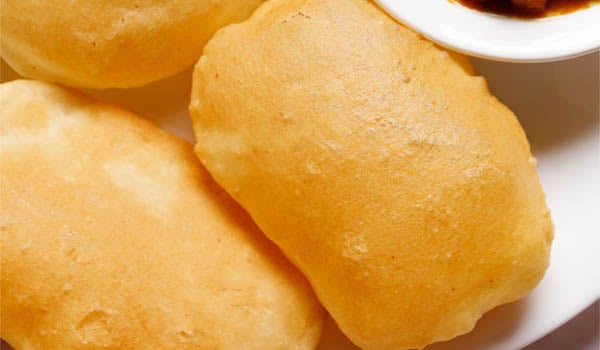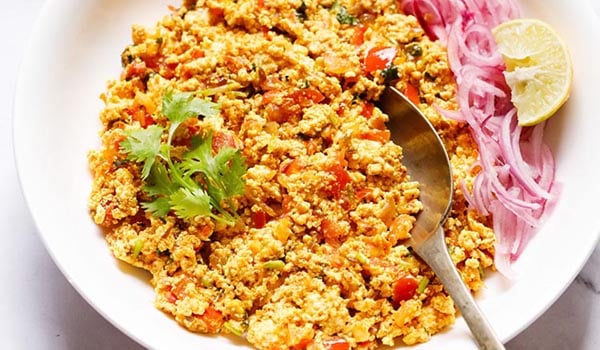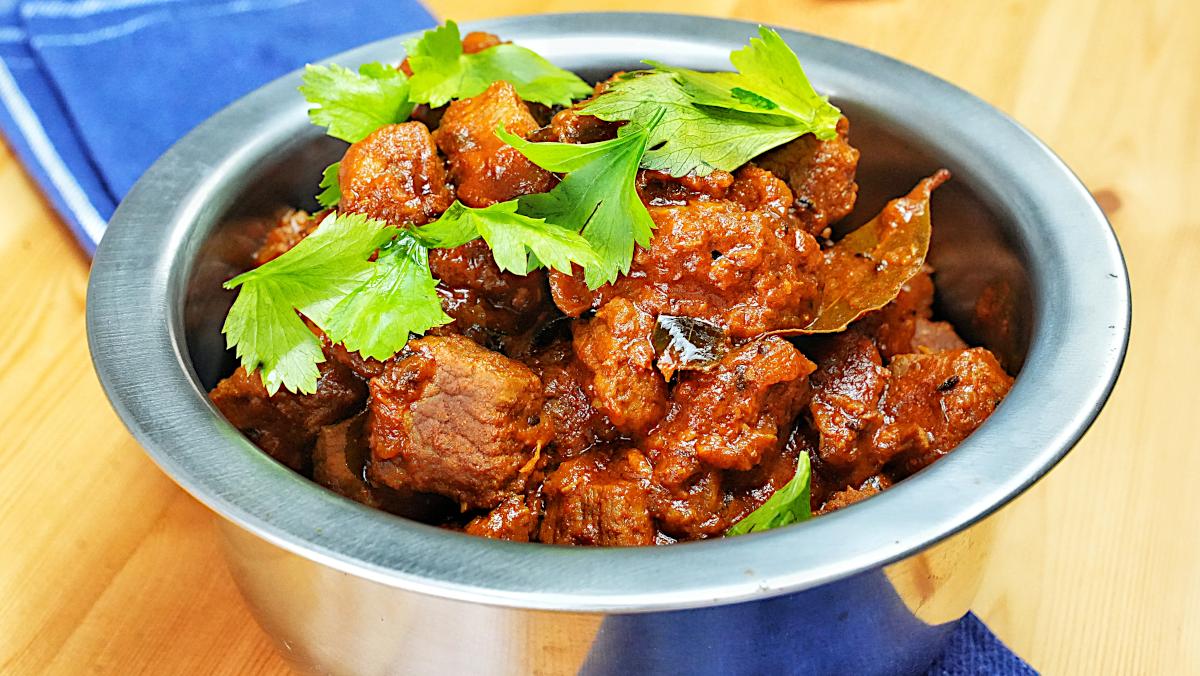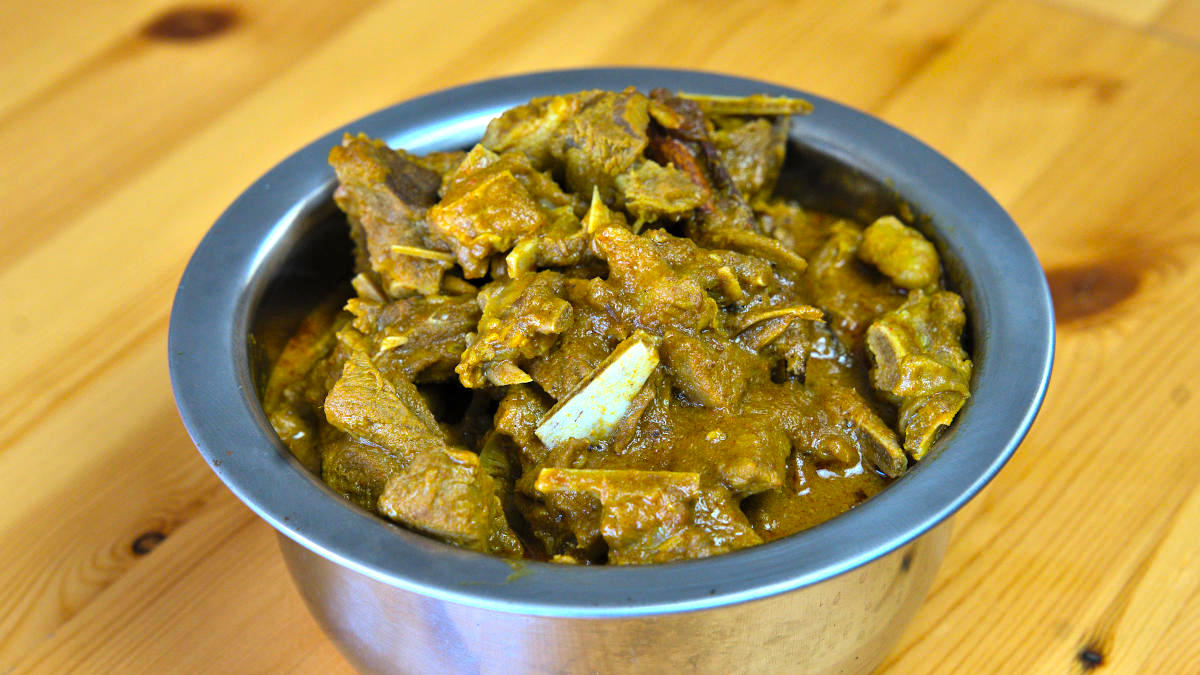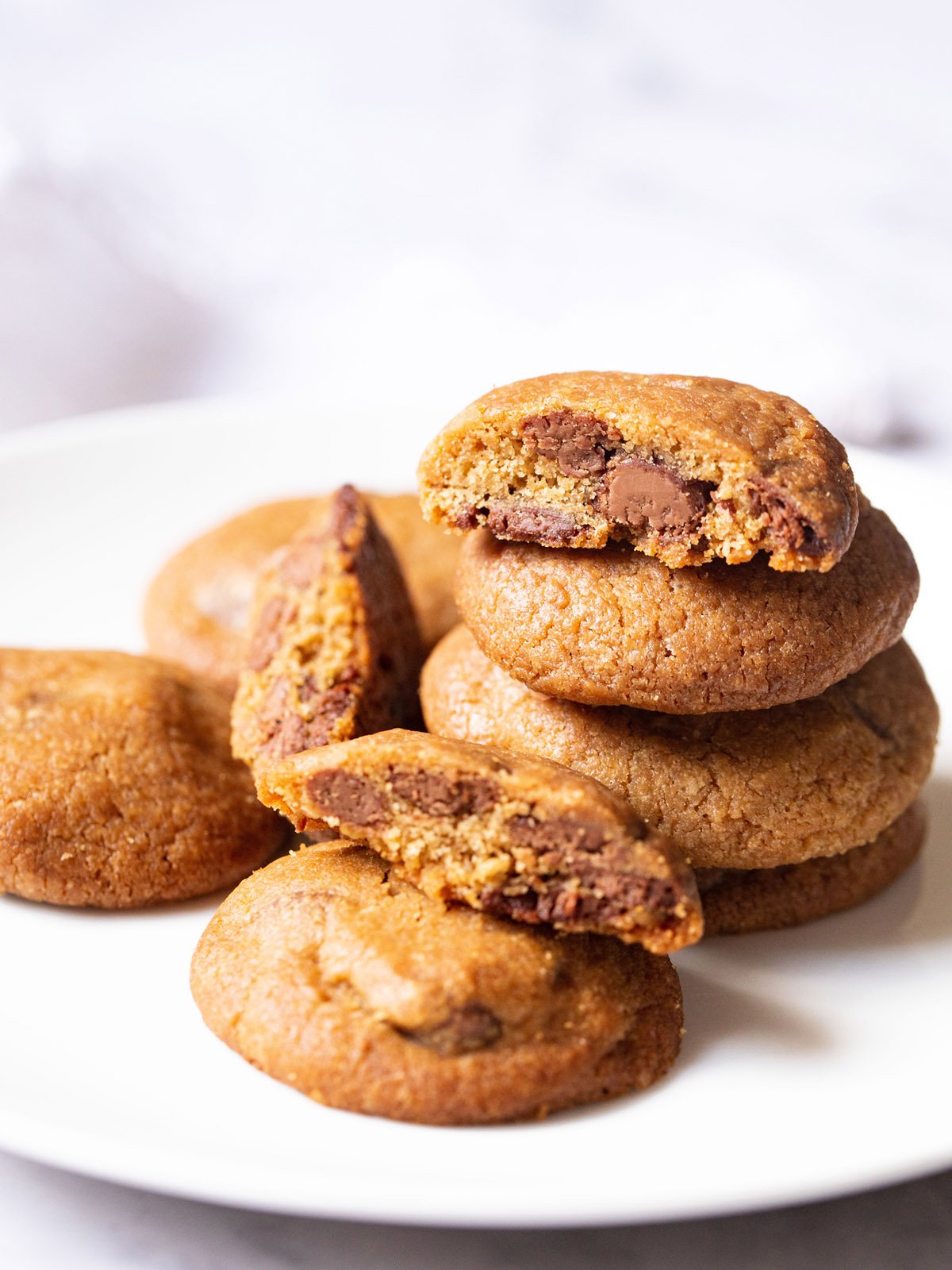Soft and fluffy Bhatura is a delightful fried bread that is a staple in Indian cuisine. This classic side dish comes in various forms, typically made from a leavened dough consisting of all-purpose flour, semolina, yogurt, water, salt, sugar, and a leavening agent such as baking soda, baking powder, or yeast. Here, I present a simple, no-yeast instant recipe for Bhature (the plural of Bhatura), complete with step-by-step pictures and detailed instructions.
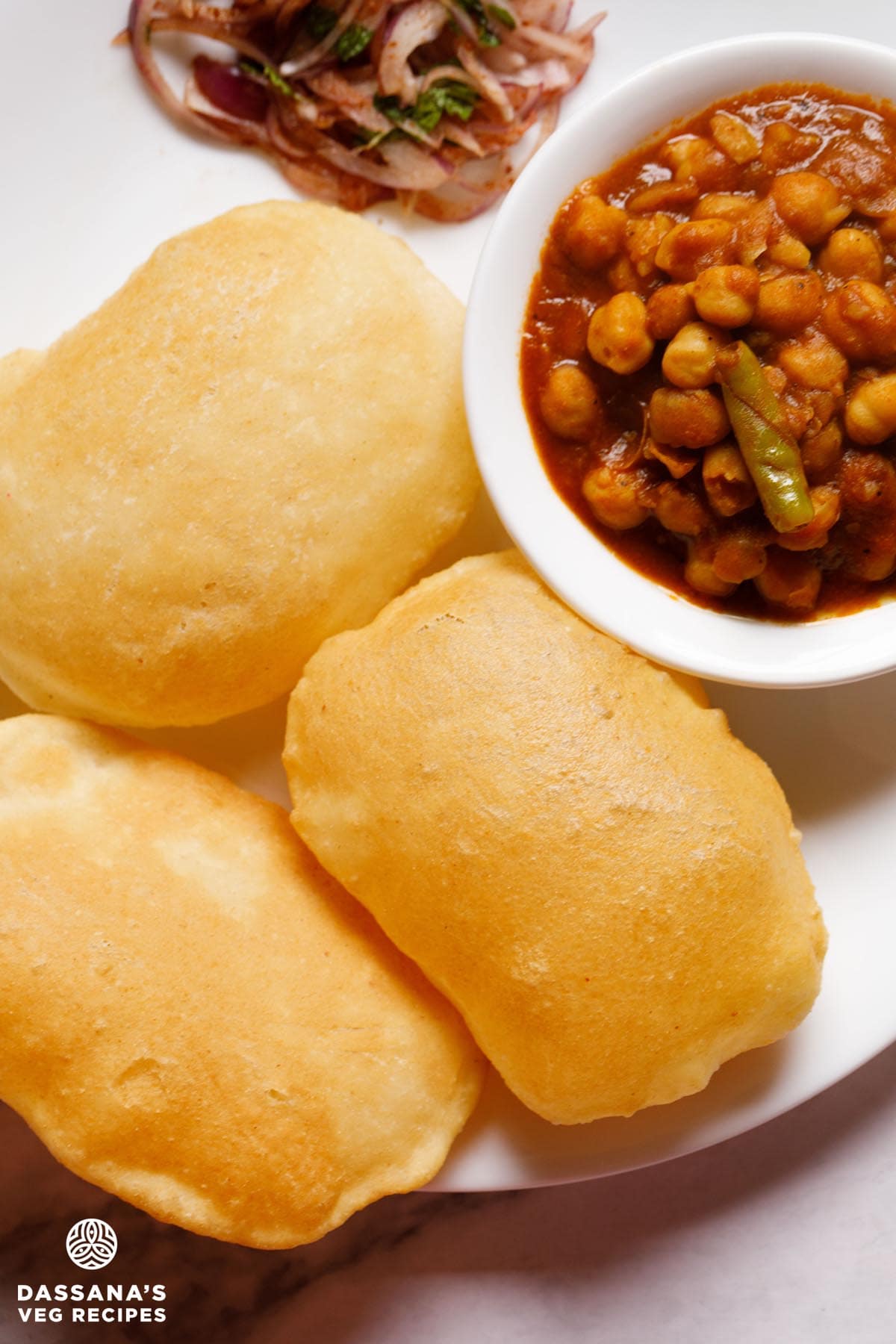
About Bhatura Recipe
A plate of warm, fluffy bhatura is essential whenever we indulge in our favorite Punjabi dishes like Chole Masala. This beloved combination, known as Chole Bhature, is incredibly popular and can be found at nearly every street food stall in India.
Traditionally, Bhatura is made with all-purpose flour. To achieve a crispy texture, some semolina (suji/rava) is added, along with yogurt for a slightly tangy flavor.
To attain the signature puffiness of Bhature, a leavening agent is always used. This can be a natural fermenting agent like sourdough starter or yeast, or an instant rising agent such as baking soda, baking powder, fruit salt (eno), or even sparkling water.
This post shares a quick and easy method for making Bhatura without yeast. This instant recipe utilizes baking soda and baking powder for leavening, along with yogurt for fermentation.
The dough requires only 2 hours to rise, significantly speeding up the process. The reaction between the baking soda, baking powder, and yogurt results in a fried bread that is light, soft, and beautifully puffed.
This recipe yields soft, fluffy, and flavorful Bhature without an overly sour taste. After the 2-hour fermentation, you can roll and deep-fry the dough while preparing your favorite chickpea curry to accompany it.
The Bhatura is made with all-purpose flour (maida) and fine semolina (sooji or rava). I have also experimented with substituting semolina with rice flour, and both versions are delicious. The rice flour variation remains softer even after cooling.
As mentioned earlier, baking soda, baking powder, and yogurt act as leavening agents. Using both baking soda and baking powder ensures that the bread does not have the typical soapy aroma that occurs if only baking soda is used, nor the metallic aftertaste that can result from using too much baking powder.
How to Make Bhatura
Step-by-Step Guide
1. Begin by sifting the following ingredients into a mixing bowl:
- 1½ cups all-purpose flour (maida)
- ½ teaspoon salt
- ¼ teaspoon baking soda
- ½ teaspoon baking powder
After sifting, add 7 tablespoons of rava or fine semolina (sooji) and 1 tablespoon of sugar to the same bowl. Mix these dry ingredients thoroughly with a spoon.
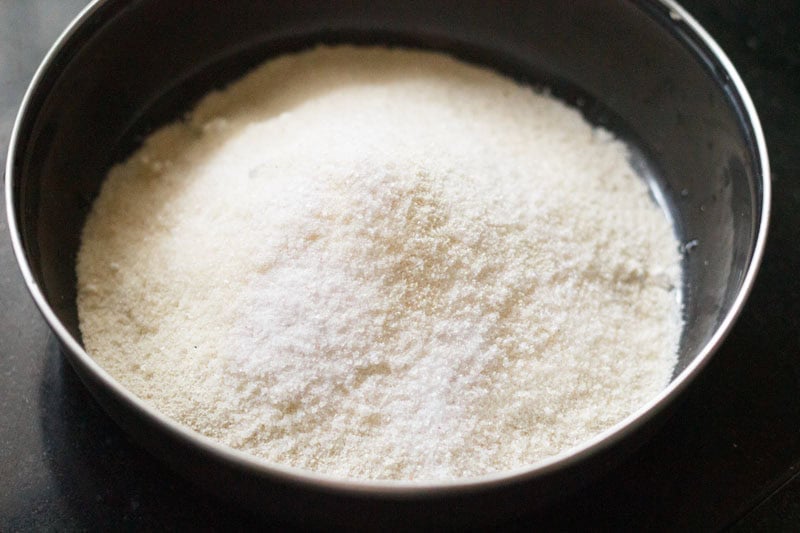
2. Add ½ cup of yogurt (curd) and 2 tablespoons of oil. Mix thoroughly with a spoon.
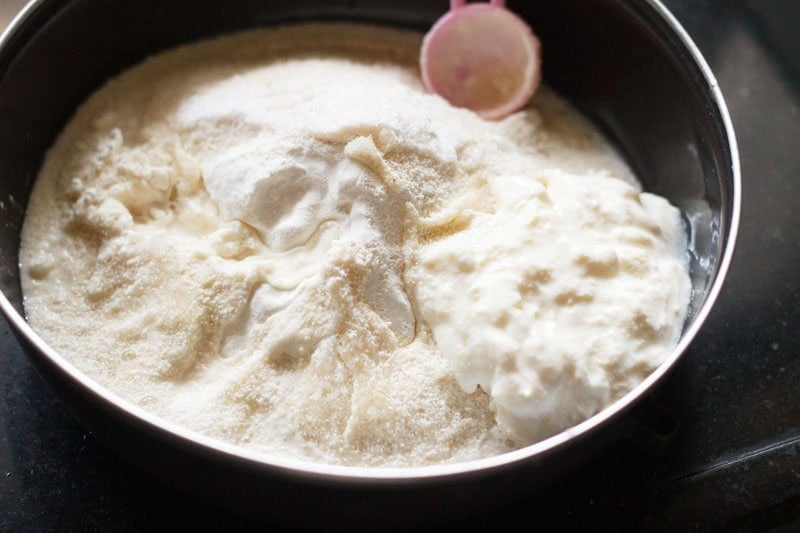
3. Gradually add about ½ tablespoon of water at a time. Mix and knead until you achieve a smooth, supple, and soft dough. Ensure the dough is not sticky.
You will need to add a total of 3 to 4 tablespoons of water, or as needed, to achieve the right consistency and texture in the dough.
If the dough appears sticky, sprinkle a few tablespoons of flour and continue kneading. If it looks dry or floury, add a little water and knead again.
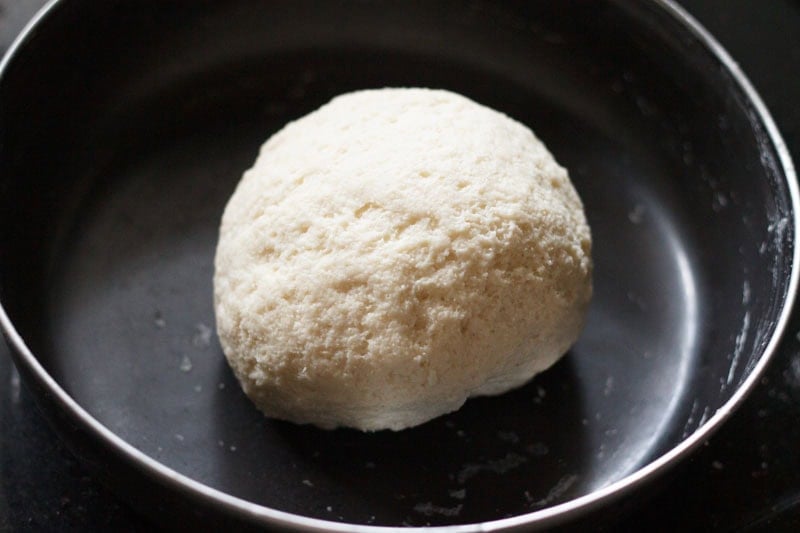
4. Cover the dough with a damp cotton napkin and let it leaven for 30 to 45 minutes. You can also leave it for about 1 to 2 hours.
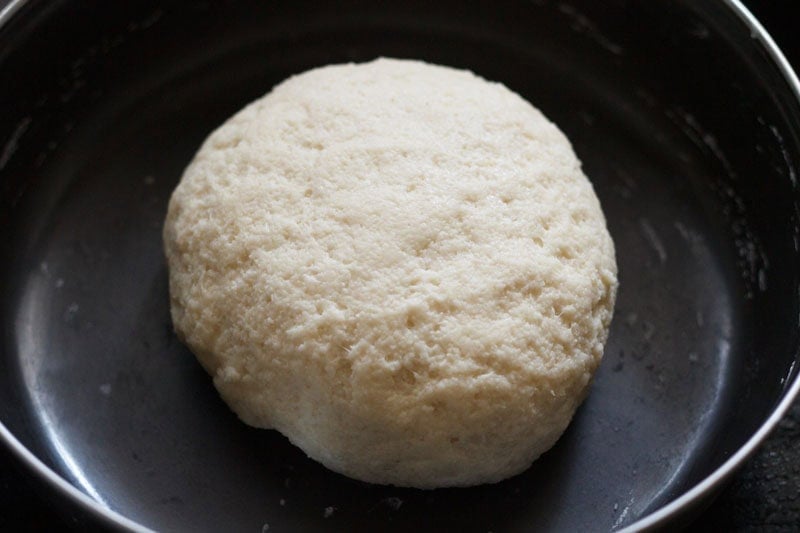
5. Before rolling and frying, heat oil in a kadai (wok) for deep frying. Maintain a medium to medium-high heat.
Form medium-sized balls from the dough and apply oil to both sides of each ball.
Using a rolling pin, roll each ball into an oval or elongated shape, ensuring the edges are about 2 to 3 mm thick.
It is important to roll the dough evenly without making the edges thin, as unevenly rolled dough won’t puff up uniformly.
You can make either larger or medium-sized bhatura. If you opt for larger bhature, you will need to use bigger dough balls, which will yield fewer bhature from the recipe.

6. Carefully drop the rolled dough into the hot oil, and it should start puffing within a minute. Fry on medium to medium-high heat.
Use a slotted spoon to gently nudge the rolled dough to help it puff evenly.
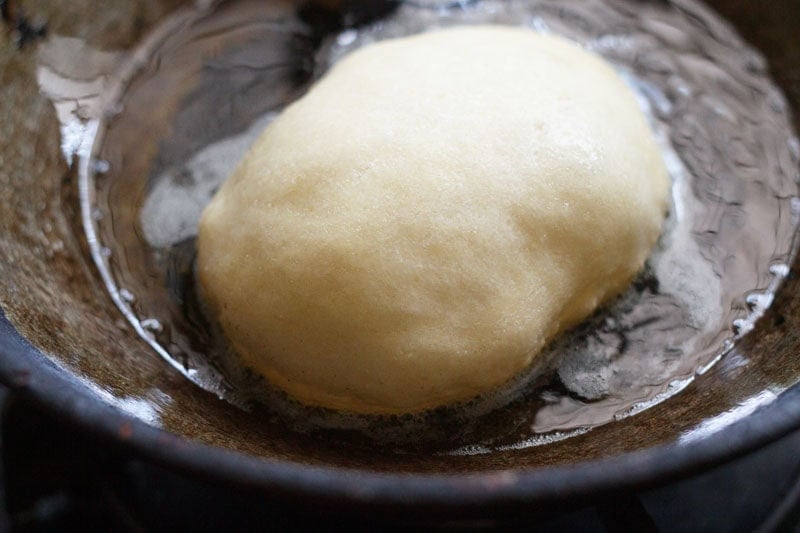
7. When the sizzling of the oil subsides and the bhatura turns a light golden color, turn it over and fry the other side.
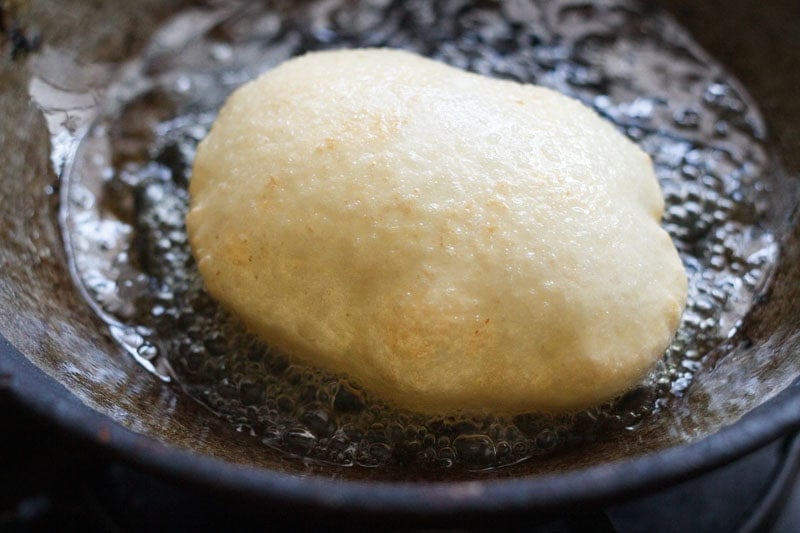
8. Once the second side is light golden, use a slotted spoon to remove the bhatura and place it on paper towels to absorb excess oil.
Fry all bhature in batches using this method.
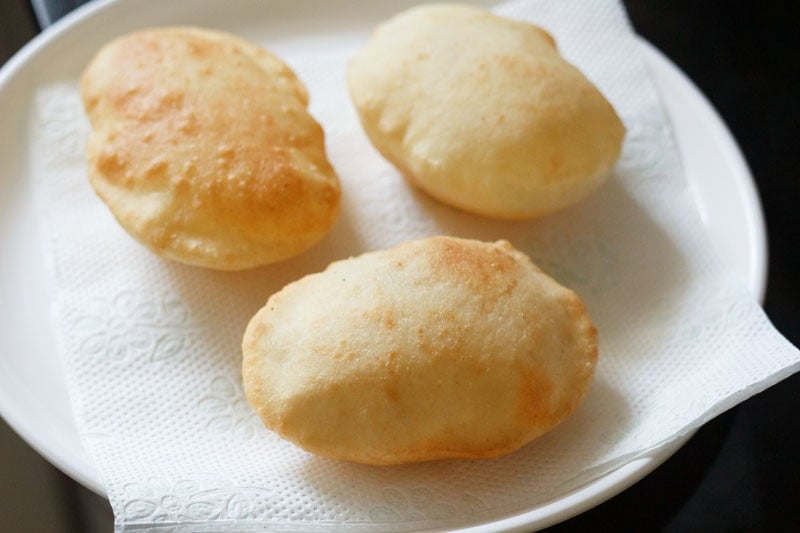
9. Serve the Bhatura hot with Chana Masala or your favorite chickpea curry. Bhature tend to become chewy once cooled, so it is best to enjoy them while still hot.
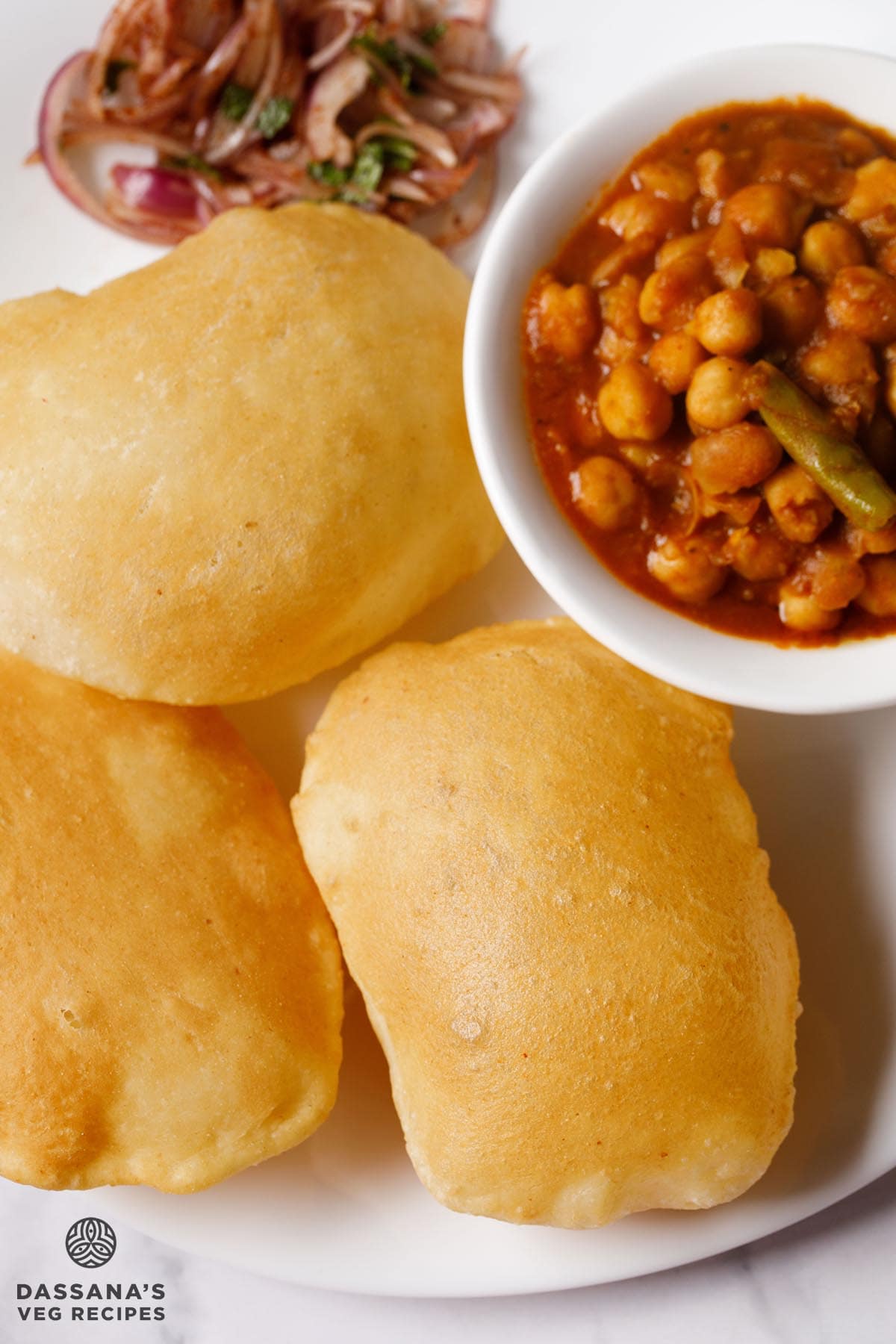
Expert Tips
- Using a blend of flours: While all-purpose flour (maida) is traditionally used, adding a small portion of semolina (sooji) or rice flour can enhance the crispness while keeping the Bhatura soft inside.
- Adding sugar: A bit of sugar enhances fermentation and gives the Bhatura a slight golden color when fried, balancing the flavors subtly.
- Resting dough: To speed up fermentation, keep the dough in a warm spot (like inside a microwave or oven with the light on). This helps the baking soda and curd react better, making the Bhatura airy and fluffy.
- Rolling Bhatura: When rolling, don’t apply too much pressure – gently roll to maintain air pockets, which helps the Bhatura puff up evenly when fried.
- Frying Bhature: The oil should be medium-hot. If the oil is too hot, the Bhatura will brown quickly but remain raw inside; if too cold, they will absorb too much oil and become greasy.
- Additional flavors: Since Bhature is deep-fried, adding ¼ teaspoon of ajwain (carom seeds) or crushed fennel seeds makes them easier to digest while enhancing flavor.
FAQs
If the dough is too sticky, sprinkle a little more all-purpose flour (maida) and knead again until it becomes smooth and soft. However, avoid adding too much flour, as it can make the Bhature dense. Lightly greasing your hands with oil while kneading can also help handle sticky dough.
While you can technically substitute baking soda with baking powder, you’ll need to add about three times more, totaling 1¼ teaspoons for this recipe. This much baking powder may result in an unpleasant metallic aftertaste.
Baking soda (sodium bicarbonate) is a pure alkaline substance that requires an acidic ingredient (like yogurt or lemon juice) to activate it and produce gas for leavening. Baking powder contains baking soda along with an acidic component, allowing it to work independently without additional acids. It provides a slower, more controlled rise compared to baking soda.
Yogurt acts as a natural leavening agent, working with baking soda to leaven the dough, resulting in light, soft, and puffy Bhature. It also imparts a slight tangy flavor and improves the texture, preventing the bhature from becoming too chewy or dense.
More Indian Fried Breads To Try!

